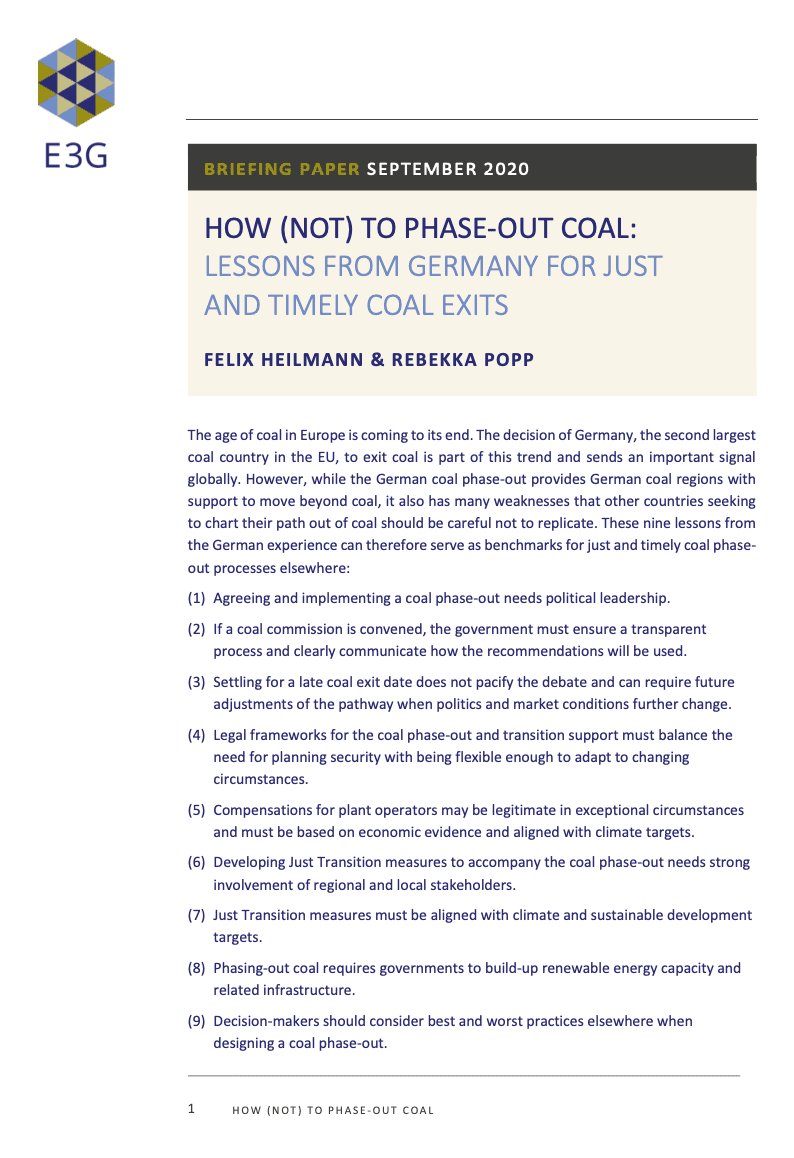How (not) to Phase out Coal

The age of coal in Europe is coming to its end. The decision of Germany, the second largest coal country in the EU, to exit coal is part of this trend and sends an important signal globally. However, while the German coal phase-out provides German coal regions with support to move beyond coal, it also has many weaknesses that other countries seeking to chart their path out of coal should be careful not to replicate. These nine lessons from the German experience can therefore serve as benchmarks for just and timely coal phase-out processes elsewhere:
- Agreeing and implementing a coal phase-out needs political leadership.
- If a coal commission is convened, the government must ensure a transparent
process and clearly communicate how the recommendations will be used. - Settling for a late coal exit date does not pacify the debate and can require future adjustments of the pathway when politics and market conditions further change.
- Legal frameworks for the coal phase-out and transition support must balance the need for planning security with being flexible enough to adapt to changing circumstances.
- Compensations for plant operators may be legitimate in exceptional circumstances and must be based on economic evidence and aligned with climate targets.
- Developing Just Transition measures to accompany the coal phase-out needs strong involvement of regional and local stakeholders.
- Just Transition measures must be aligned with climate and sustainable development targets.
- Phasing-out coal requires governments to build-up renewable energy capacity and related infrastructure.
- Decision-makers should consider best and worst practices elsewhere when
designing a coal phase-out.